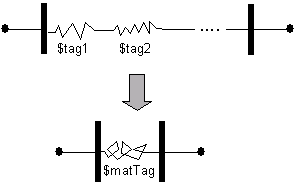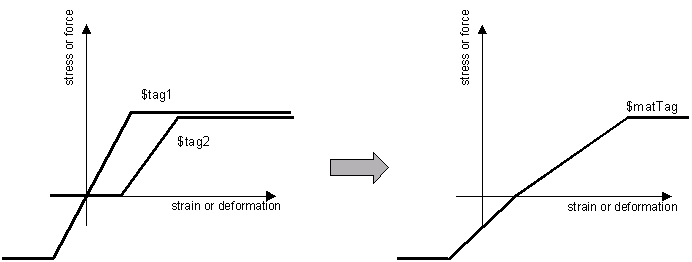Series Material: Difference between revisions
Jump to navigation
Jump to search
No edit summary |
No edit summary |
||
| Line 15: | Line 15: | ||
|} | |} | ||
The | The series material is represented graphically: | ||
[[Image:SeriesMaterial.gif]] | [[Image:SeriesMaterial.gif]] | ||
In a | In a series model, stresses are equal and strains and flexibilities are additive: | ||
[[Image:SeriesMaterialExample.gif]] | [[Image:SeriesMaterialExample.gif]] | ||
Revision as of 16:49, 19 May 2010
- Command_Manual
- Tcl Commands
- Modeling_Commands
- model
- uniaxialMaterial
- ndMaterial
- frictionModel
- section
- geometricTransf
- element
- node
- sp commands
- mp commands
- timeSeries
- pattern
- mass
- block commands
- region
- rayleigh
- Analysis Commands
- Output Commands
- Misc Commands
- DataBase Commands
This command is used to construct a series material object made up of an arbitrary number of previously-constructed UniaxialMaterial objects.
| uniaxialMaterial Series $matTag $tag1 $tag2 ... |
| $matTag | integer tag identifying material |
| $tag1 $tag2 ... | identification tags of materials making up the material model |
The series material is represented graphically:

In a series model, stresses are equal and strains and flexibilities are additive:

Code Developed by: Micheal Scott, Oregon State University
Images Developed by: Silvia Mazzoni